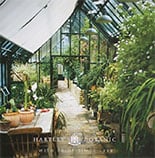Whether you’re planting a new garden, or filling out an established plot, bare-root perennials will deliver: they’re cost-effective, eco-friendly and raring to grow.
It doesn’t take much to embark on a lifelong adventure in gardening. You might be a newbie with a builders-just-left-the-scene blank canvas, or be itching to make your own mark on a long-tamed, pre-loved patch – or at any point in between.
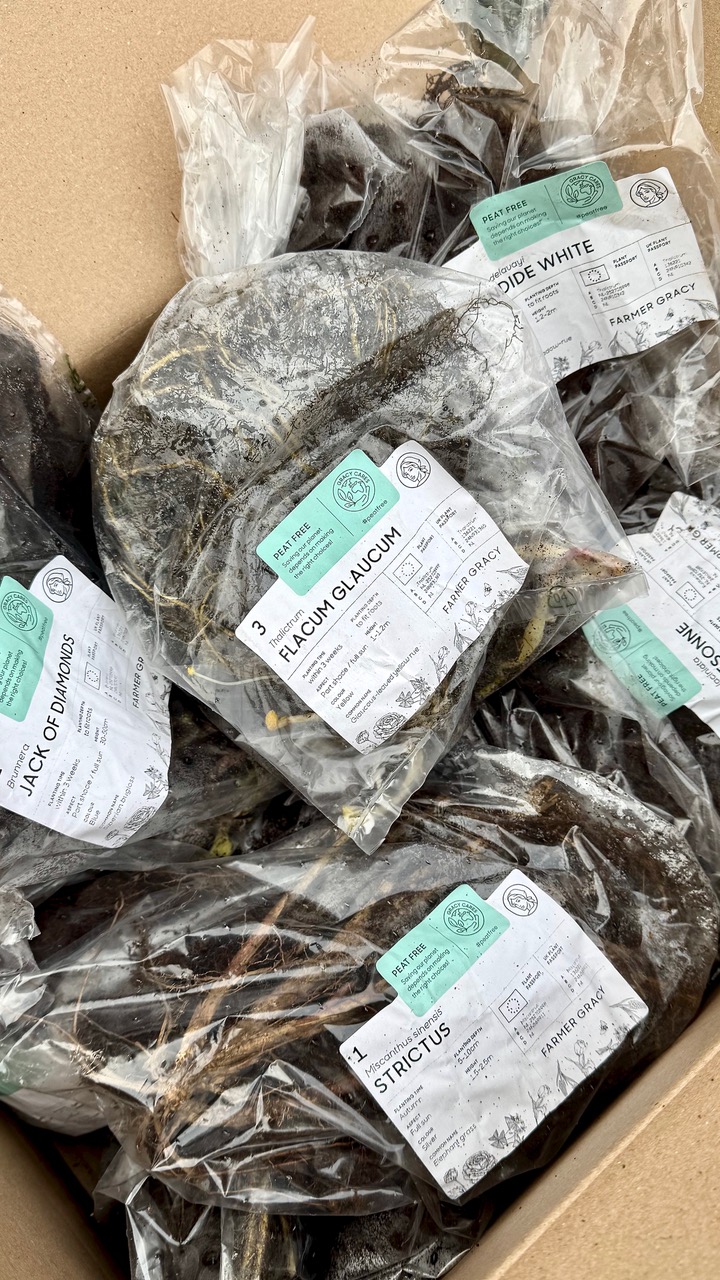
Depending on where your gardening adventure starts, there will always be some heavy work to do, and investments to make (think sun-catching greenhouse). But when it comes to adding plants to your garden, there are three basic ways of getting them there: as seeds, bulbs or already-growing plants (there are a few exceptions, such as dormant hardwood cuttings of willow, which travel well).
Since the depths of winter, I’ve had that familiar, unshakeable urge to fill up my no-dig beds with a lot more plants; my garden never feels as if there’s enough in it. Usually, as spring approaches, other must-dos take over, the urge fades and I wake with a start, disappointed, from my plant-filled dreams. But not this spring. This time I was determined to hold on to the dream and turn it into a reality.
I crave more low-fuss perennial plants – especially those that I know thrive here on the edge of this fragment of Celtic rainforest (I’ve potted up eight varieties of Thalictrum alone). Being too impatient to raise perennials from seed, I needed up-and-running plants, plenty of them, at a reasonable cost – but I don’t have time to scour local nurseries and garden centres to find them (that’s no mean feat here in rural north Wales). I needed them to come to me, rooted, ready and raring to grow.
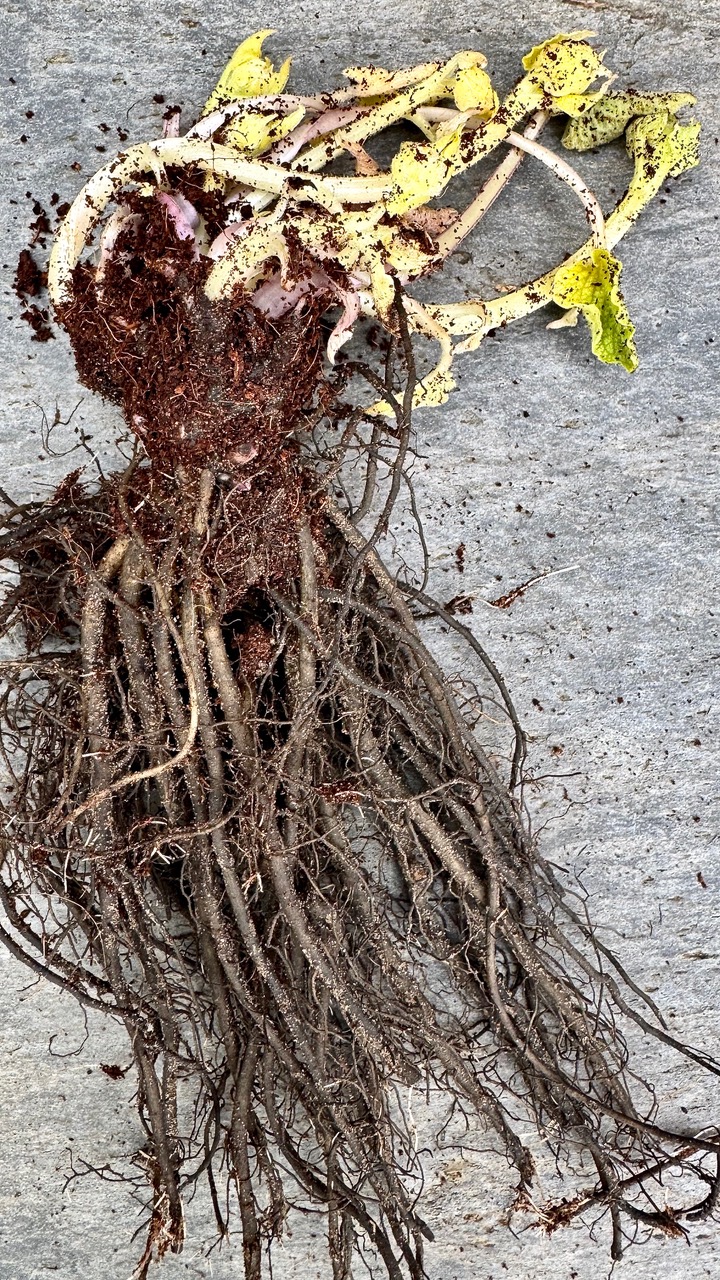
So I set my sights on bare-root perennials to bring my dreams to life. ‘Bare-roots’ are young dormant plants (usually divisions or offsets of bigger crowns) which have been lifted from the open ground in the nursery where they were grown, trimmed, shaken free of soil (hence their name), packed up and then mailed out to daydreamy gardeners like me, from early spring onwards.
A boxful of plants arrived on my doorstep – the equivalent of a weighty car-boot-load of potted plants, minus the gardening miles, not to mention the plastic pots (my plants did arrive in breathable and recyclable plastic bags, containing damp coir). Everything necessary to establish new plants on my patch arrived in a compostable cardboard box.
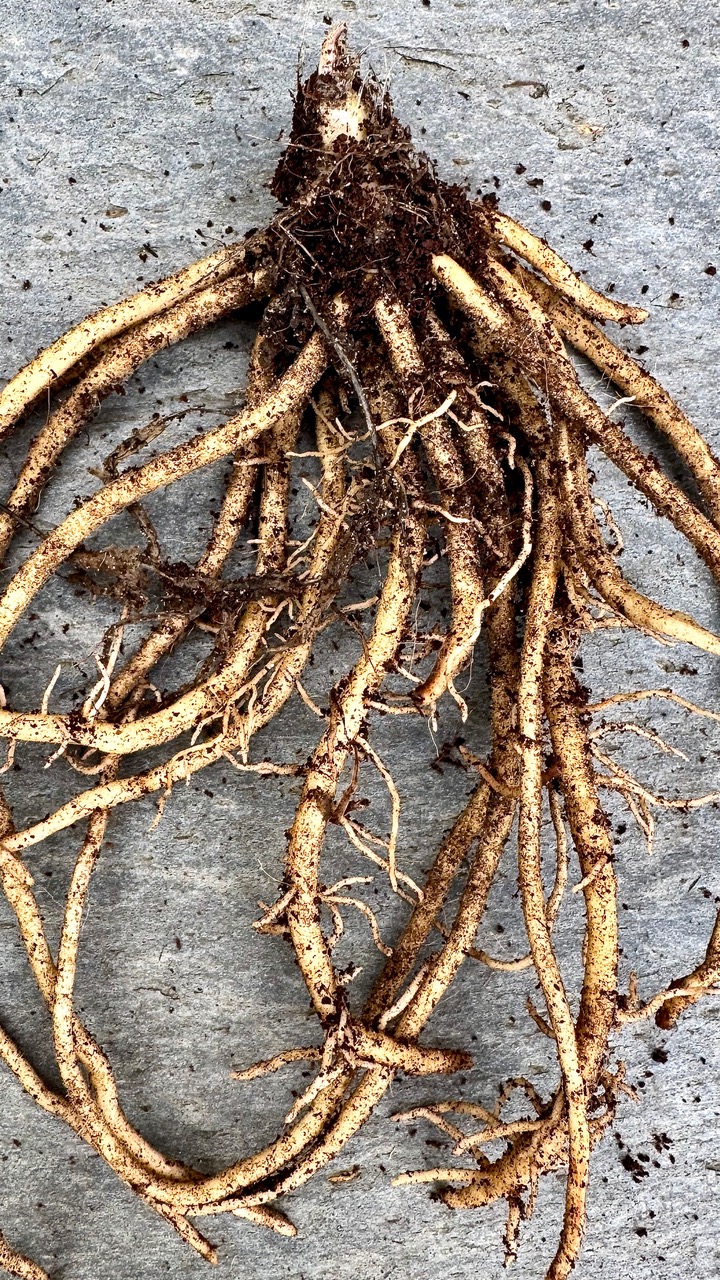
Bare-root plants’ superpower is that because they don’t travel in a pot of heavy compost, they can work out more cost-effective to buy; you could pay the same for just a few relatively heavy potted plants to be delivered as I did for 20 much lighter dream-makers. I also had a wide selection of varieties to drool over (search online for bare-root suppliers). Travelling light also gives them an eco-friendly edge; less weight is less fuel burned.
The packaging needs to be opened straight away; then there are two options. The plants can either go straight into well-prepared, weed-free ground where you want them to grow, or you can opt for a transition stage by potting them into quality peat-free compost (pamper them – they’re an investment) and growing them on until late spring or early summer, when they can be planted out.
This might seem a faff, but here it’s imperative: voles are ultra-peckish right now, and will grub up, undermine and eat just about any plant going – and don’t get me started on flick-flick-flick blackbirds… Apart from that, potting up gives bare-root plants a buffer against unpredictable swings in the weather between now and early summer; a pot-grown plant with well-established roots is going to stand a better chance here than a just-waking-up young plant finding itself in soil that’s been recently chilled by -6°C frosts, with deluges, snow and more sharp frosts quite possible. A little more pampering is needed – watering, checking for slugs – but it’s worth it to bring my dreams to life. Your own natural nemeses may vary.
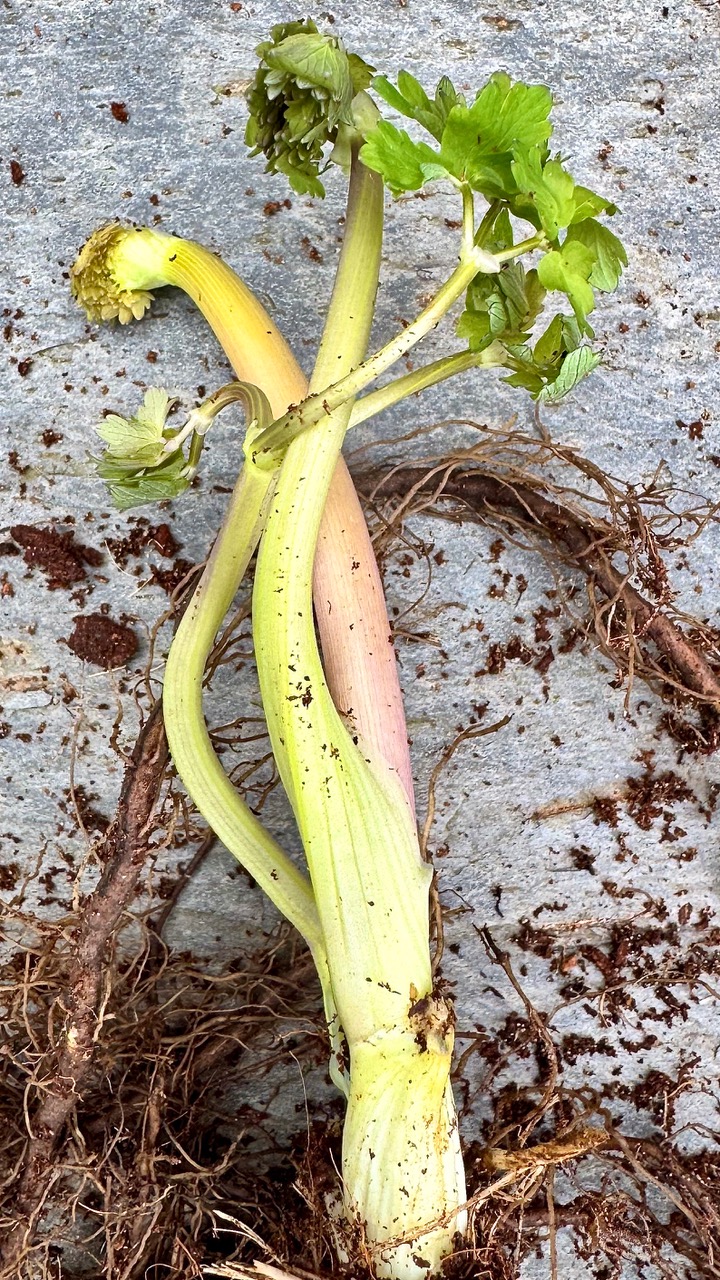
Despite the timeless thrill of opening any box of plants, bulbs or seeds, with bare-root perennials, you do need to prepare yourself to feel a little deflated: what’s in the box never matches what’s in the catalogue. Bare-root plants are essentially brown and leafless, and you might even mistake them for also being lifeless – but look closely; their dream-making qualities live in their roots, and in their embryonic buds and young shoots (if you’re lucky, what will reinflate you is being able to tease apart some roots, gaining two new plants for the price of one). If plants have been held up in transit and some do arrive devoid of life, take pictures and contact the supplier straight away to find a resolution.
Some of my plants – notably the Thalictrums – had begun to sprout while in transit from the Netherlands, producing pale yellow, light-starved, topsy-turvy shoots, but it was nothing to fret about. A few days in the shade after potting and they’ve coloured up, and the wonky shoots are righting themselves.
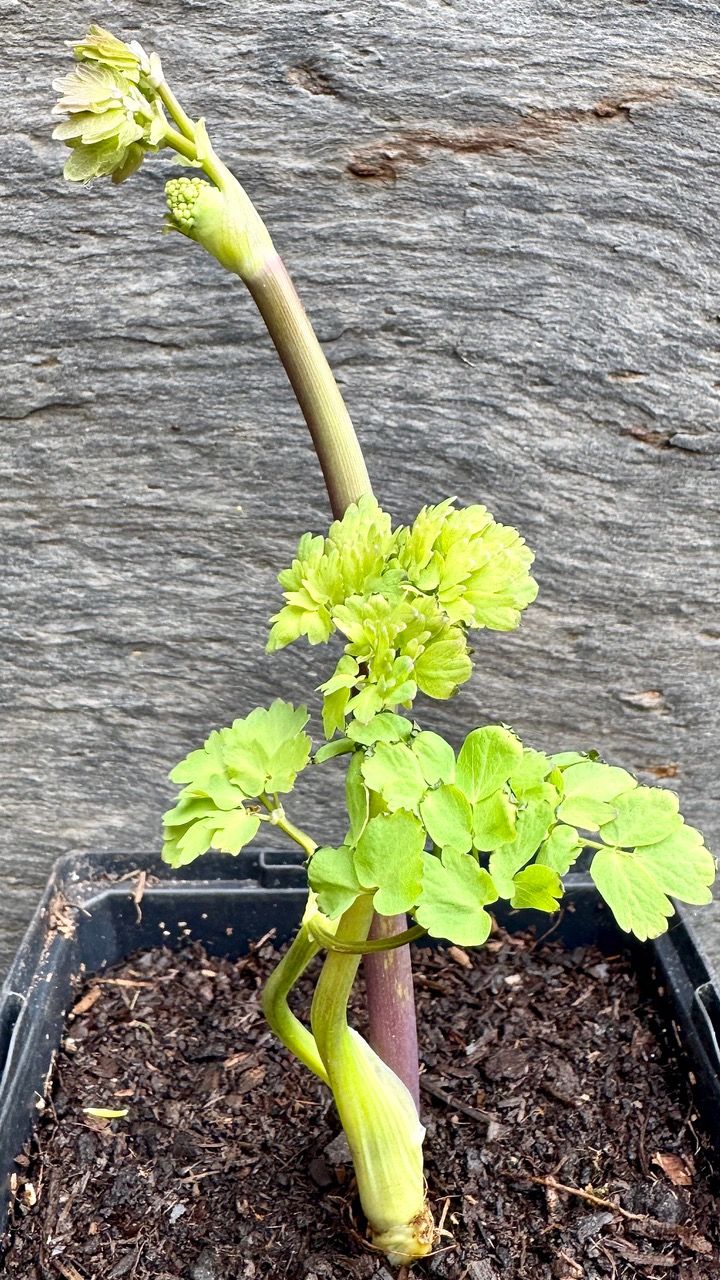
Any pale shoots colour up and right themselves in a few days.
Whether you’re potting up or planting direct into the garden, soak the roots for several hours first (a tip for daydreamers: make sure you write and distribute the labels before you remove them from the labelled packs…). The cardinal rule is to make sure the crown is level with the compost/soil. This is more clear-cut with plants such as hostas, whose thick roots radiate out from a distinct pointed bud that encloses the expanding foliage. Spread out the bare roots as much as possible, and work compost or soil around them; tapping the pots as you go settles the mix around them. Give them a thorough watering in after potting/planting, and be ready to water outdoor plants regularly should a spring dry spell set in.
If you’re longing to bolster your beds and borders with an influx of new plants, going bare-root could be for you. But don’t dally: roots are lifted and sent out just as they’re waking up, and the bare-root window is closing as spring warms.
My 20 bare-roots are now 20 young plants stirring into life. I did it; my dream is on track, and the adventure goes on.
Text and images © John Walker
Join John on X @earthFgardener

